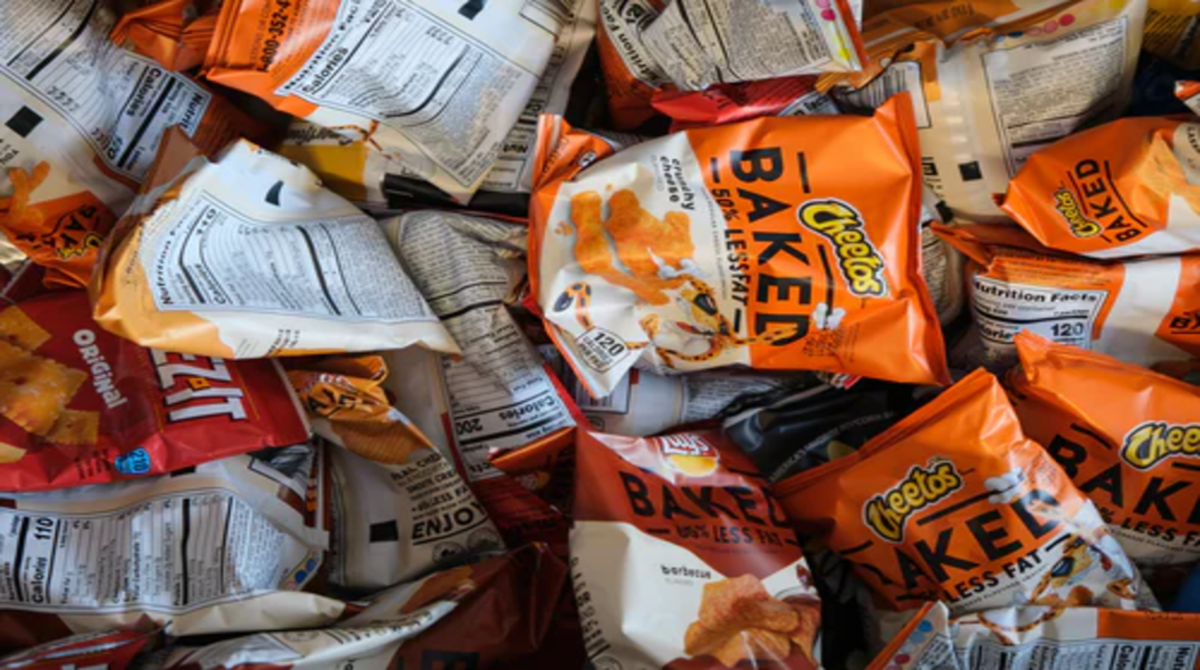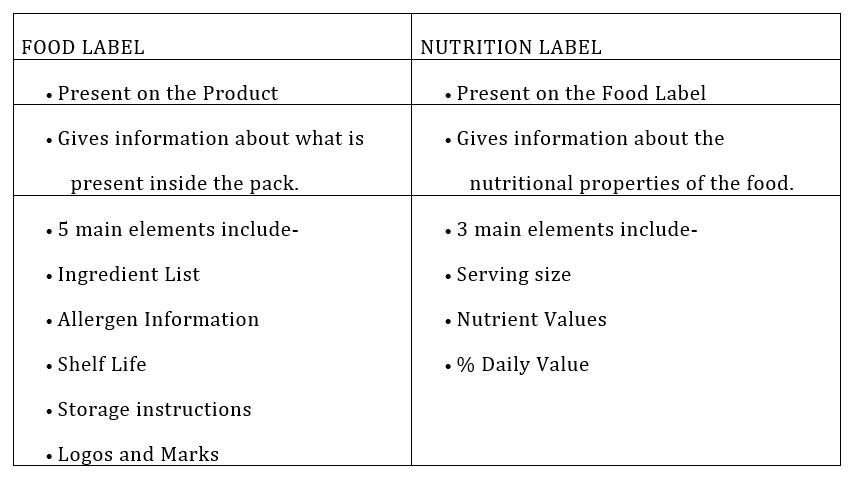What Is The Difference Between A Food Label And Nutrition Label?
July 20, 2022

Have you tried searching online for images on food labels but got nutrition labels instead? Both these terms seem similar, even online search engines cannot distinguish them. But Food labels and Nutrition Labels are different. Yes, that’s true! They both convey different stories to the consumers reading them. However, they are also similar as they both help consumers to make smart and informed choices. The main reason as to why most consumers are confused in selecting the right product is because, they tend to READ the FOOD LABEL hastily and fail to UNDERSTAND the NUTRITION LABEL correctly.
Food Labels
The internationally accepted definition of a food label as given by the Food and Agricultural Organization (FAO) is “any tag, brand, mark, pictorial or other descriptive matter, written, printed, stencilled, marked, embossed or impressed on, or attached to, a container of food.” In other words, a food label is like the ID of the product giving us information about what is present inside the pack. It also gives us information about the shelf life, storage conditions, instructions to use, manufacturers, list of ingredients, additives and allergens of the food product.
Reading Food Labels
It's important to read food labels in order to make well-informed choices. It helps consumers to choose or avoid a particular product depending on the presence or absence of a particular allergen or additive. Let's deep dive into the 5 main aspects of a food label to look at.
1. Ingredient List
One of the main aspects to look at, that it gives information about the presence of individual ingredients contained in the product along with the presence of additives. It is written in descending order, which signifies the quantities in which it is present, that is from higher to lower quantity.
2. Allergen information
It gives information about those ingredients that are known to cause hypersensitivity such as:
Cereals containing gluten; i.e., wheat, rye, barley, oats, spelt or their hybridized strains and products of these;
Crustacea and products of these;
Eggs and egg products;
Fish and fish products;
Peanuts, soybeans and products of these;
Milk and milk products (lactose included);
Tree nuts and nut products; and
Sulphite in concentrations of 10 mg/kg or more.
How to choose a food product if you have a Food Allergy?
3. Shelf life
Contains information about the food safety and quality of the product, written as:
Use by date- signifying food safety wherein a product turns spoilt or stale after this date.
Best before date- signifying food quality wherein a product’s quality shall remain at its best within this date.
4. Storage instructions
It states special storage requirements of a product such as to refrigerate after opening, storing in a cool and dry place, etc. This information helps consumers to increase the product quality by following proper storage conditions.
5. Logos and Marks
This is yet another important aspect to look at which is often neglected. Important logos such as veg and non-veg, FSSAI (Food governing body of India), Jaivik Bharat (For organic products in India) and other food safety certification marks delivers additional information about the product.

Nutrition Labels
Nutrition labels as defined by the Codex Alimentarius Commission is “a description intended to inform the consumer of the nutritional properties of a food.” It is present on the food label or package in the form of a table and includes Nutrient Declaration, Serving Size and % Daily Value.
1. Nutrient declaration
All Nutritional Information is provided per 100g or 100ml or per single consumption pack of the product on the label containing the following nutrients -
•Energy (kcal)
•Protein (g)
•Carbohydrate (g), Total Sugars (g), Added Sugars (g)
•Total Fat (g), Saturated Fat (g) and Trans Fat (g)
•Sodium (mg)
It is also mandatory to declare any nutrient for which a claim is made.
2. Serving Size
“Serving or serve size” means an amount of food customarily consumed per eating occasion or as defined on the label which is expressed in the metric units.
The average quantity of food in a serving is declared in the nutrition information panel. The serving size is declared in grams (g) if the food is solid or semi-solid and in milliliters (mL) if the food is a liquid. It also includes the number of servings in the package.
3. % Daily Value
The % Daily Value (%DV), also known as % Guideline Daily Amount (%GDA) is the percentage of the Daily Value for each nutrient in a serving of the food. The Daily Values are reference amounts (expressed in grams, milligrams, or micrograms) of nutrients to consume or not exceed each day.
The %DV shows how much a nutrient in a serving of a food contributes to a total daily diet. It helps consumers determine if a serving of food is high or low in a nutrient.
The Difference between Food Label and Nutrition Label
Although Food Label and Nutrition Label sounds synonymous, there are differences in both these terms. Their intent however, is to bridge the gap between the producers and the consumers and bring more transparency to the food labelling system. It is therefore important to have both these displayed on the product. The table below summarizes the differences between the two.

It is therefore essential to READ and UNDERSTAND both the food and nutrition labels in order to make healthier food choices.
Get Regulatory Compliant Food Labels at FoLSol in under 5 minutes!
References
Food and Agricultural Organization of the United Nations (FAO). Food Labelling.
NHS Health Scotland. (April, 2020). Food Labelling.
US Food and Drug Administration (FDA). How to Understand and Use the Nutrition Facts Label.

Olivia Crasto (MSc in Food Processing & Preservation)
Olivia is a Learner for Life, Eco enthusiast and loves to experience nature and its beauty
